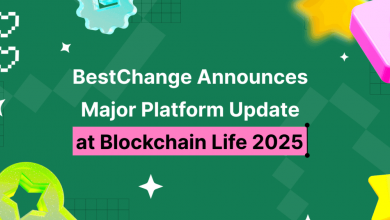Stablecoin Infrastructure Evolution

The stablecoin settlement landscape has undergone significant transformation since the early 2010s. What began as simple peer-to-peer token transfers has evolved into sophisticated multi-protocol ecosystems capable of institutional-grade foreign exchange settlement, featuring advanced price discovery mechanisms, cross-chain interoperability, and real-time optimization algorithms.
From Fragmented Markets to Unified Liquidity
The early stablecoin foreign exchange ecosystem faced substantial challenges. Users encountered significant slippage due to fragmented liquidity pools, suboptimal routing mechanisms that couldn’t effectively aggregate rates across venues, and limited access to competitive institutional pricing. Bid-ask spreads were often 50-100 basis points wider than traditional FX markets.
Modern settlement infrastructure addresses these issues through sophisticated price aggregation engines that query multiple liquidity sources in real-time—including centralized exchanges, decentralized automated market makers (AMMs), and institutional over-the-counter networks. This advancement has substantially narrowed spreads and improved execution quality for cross-border transactions.
Companies like Almond FinTech have developed analytics platforms that support treasury operations with data-driven insights for FX settlements and payment optimization. These platforms utilize orchestration technology to analyze performance across different blockchain networks and international corridors, providing transparency into settlement efficiency that was previously unavailable to most organizations.
Multi-Variable Optimization in Routing Decisions
Contemporary routing algorithms extend beyond simple price comparison to incorporate multiple optimization factors: network congestion analysis, transaction fee estimation, settlement finality timeframes, counterparty risk evaluation, and regulatory compliance requirements across different jurisdictions.
Advanced platforms employ machine learning models trained on historical transaction data to identify patterns and predict optimal execution paths. This predictive capability enables more informed routing decisions based on anticipated market conditions rather than reactive responses to current pricing.
Analysis of major digital assets including Bitcoin, Ethereum, Solana, USDC, and USDT across various international corridors demonstrates that no single asset consistently provides optimal performance across all market conditions. This finding supports diversified routing strategies that can select the most efficient settlement path based on current network conditions and corridor-specific factors.
Performance Analytics and Market Timing
Modern settlement infrastructure employs quantitative analysis to optimize exchange rates relative to mid-market benchmarks. Performance analysis by corridor and time period enables both transaction-level and strategic optimization.
Market analysis reveals interesting temporal patterns in certain corridors. For example, some US-to-Philippines transfers show rate improvements during weekend periods, with potential savings of up to 25 basis points when comparing Sunday versus Wednesday execution. Similarly, specific time windows like 1-4pm UTC may demonstrate consistent advantages across certain currency pairs, though these patterns can shift based on market dynamics.
Measurable Cost Reductions Through Optimization
The transition to data-driven optimization delivers quantifiable financial benefits. Analytics platforms now track rate improvements through dynamic currency selection and routing optimization, with multi-asset strategies showing measurable advantages over single-currency approaches.
Strategic combinations of stablecoins like USDC and USDT can yield incremental improvements, while tactical inclusion of other digital assets during favorable market conditions may provide additional optimization opportunities. However, these strategies require sophisticated risk management and real-time monitoring capabilities.
The financial impact scales significantly with transaction volume. For organizations processing $1 million daily in cross-border settlements, a 10 basis point improvement generates approximately $1,000 in daily savings, or $365,000 annually. For higher-volume operations, these optimizations can deliver substantial cost reductions while reducing settlement risk and operational complexity.
Looking Forward: Infrastructure Maturation
As the stablecoin settlement ecosystem continues to develop, emerging trends include enhanced regulatory compliance frameworks, improved privacy-preserving settlement mechanisms, and potential integration pathways with central bank digital currencies (CBDCs). The infrastructure being built today establishes the foundation for more efficient and accessible cross-border financial services.
Organizations that adopt these advanced settlement technologies can potentially benefit from improved execution quality, reduced operational costs, and enhanced transparency in their international payment operations.
About Almond FinTech
Almond FinTech delivers fast, cost-effective foreign exchange transactions through innovative stablecoin and blockchain technology solutions. Our comprehensive global money movement platform optimizes fiat-to-fiat transfers across established blockchain networks, providing near real-time settlements with superior-to-market FX rates. As a specialized B2B provider, Almond serves global organizations seeking efficient, reliable cross-border payment and foreign exchange solutions that scale with their business needs.




